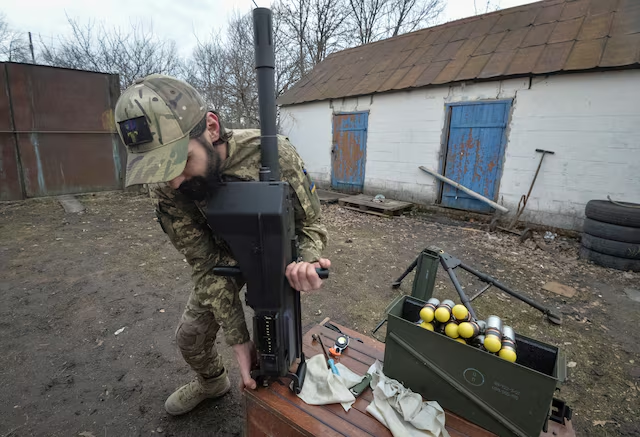EU Plans to Fund Ukraine’s Weapons with Russian Assets
The European Union is exploring a bold plan to make Russia pay for weapons Ukraine uses against it. This follows U.S. President Donald Trump’s approval of a $10 billion arms package for Ukraine.
The EU aims to use profits from frozen Russian assets to fund the initiative, avoiding costs for EU or U.S. taxpayers.

NATO’s Ukraine assistance mission, known as NATO Security Assistance and Training for Ukraine (NSATU), will spearhead the effort. It will use a central fund filled with profits from frozen Russian assets. European allies and Canada will also contribute funds.
The money will buy American weapons based on Ukraine’s “shopping list.” Poland’s Foreign Minister Radosław Sikorski strongly supports using Russian profits, questioning why European taxpayers should bear the cost
Frozen Russian Assets as Funding Source
Since Russia’s 2022 invasion of Ukraine, the EU has frozen €210 billion ($243 billion) in Russian assets. These assets, held in interest-bearing instruments like government bonds, generate profits. The EU plans to use these profits, not the principal, to fund Ukraine’s arms. This approach is seen as legally sound, with courts approving the use of such profits.
The funds could also support Ukraine’s reconstruction later, but saving lives is the priority now
Trump’s Role and U.S. Conditions
On July 14, 2025, Trump announced the U.S. would supply weapons, including Patriot air-defense systems, to Ukraine. However, he insisted NATO allies, not U.S. taxpayers, pay for them.
European countries would buy the arms and transfer them to Ukraine. This aligns with Trump’s campaign pledge to reduce U.S. financial involvement in the war. Some EU nations, like Denmark, Sweden, and the Netherlands, are open to the plan but need more details
European Resistance and Concerns
Not all EU countries support the plan. France, Hungary, the Czech Republic, and Italy have reportedly refused to participate, citing financial constraints or strategic concerns.
Some worry that using Russian assets could provoke Moscow, escalating the conflict. Others note EU regulations may block using EU budget funds for U.S. weapons purchases. Several countries were also not informed of the plan beforehand, causing frustration
Russia has condemned Western arms supplies to Ukraine, claiming they prolong the conflict. Moscow views the use of its frozen assets as a provocation and has not responded to peace talk proposals.
The Kremlin dismissed Trump’s related threats of 100% tariffs on countries trading with Russia if no peace deal is reached within 50 days. Meanwhile, EU foreign policy chief Kaja Kallas has raised alarms about Russia’s increased use of chemical weapons, urging stronger support for Ukraine
The EU’s plan to use Russian asset profits is a creative but controversial move. It aims to support Ukraine while minimizing costs for Western taxpayers.
However, resistance from some EU nations and Russia’s potential retaliation pose challenges. As NATO finalizes details, the first Patriot system deliveries are expected in Ukraine soon, marking a critical step in bolstering its defense against Russian aggression.


 Russian border base rocked by Ukrainian fighter jet strike
Russian border base rocked by Ukrainian fighter jet strike  Ukraine Hits Russia’s Key Military Sites in a Big Attack
Ukraine Hits Russia’s Key Military Sites in a Big Attack  Georgia hosts NATO military despite perceived pivot toward Russia
Georgia hosts NATO military despite perceived pivot toward Russia  Pakistan-Russia Freight Train Service to Begin in August 2025
Pakistan-Russia Freight Train Service to Begin in August 2025  Moscow Officially Backs Taliban Government, a Global First
Moscow Officially Backs Taliban Government, a Global First  NATO Commits to 5% GDP Defense Spending by 2035
NATO Commits to 5% GDP Defense Spending by 2035